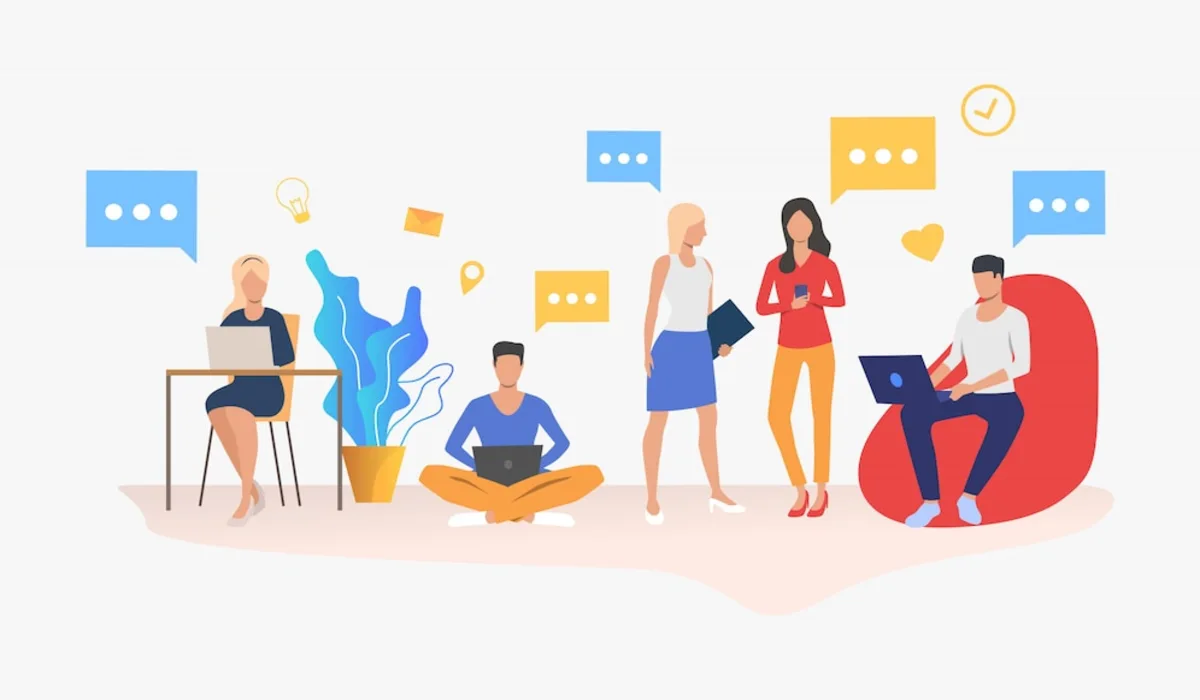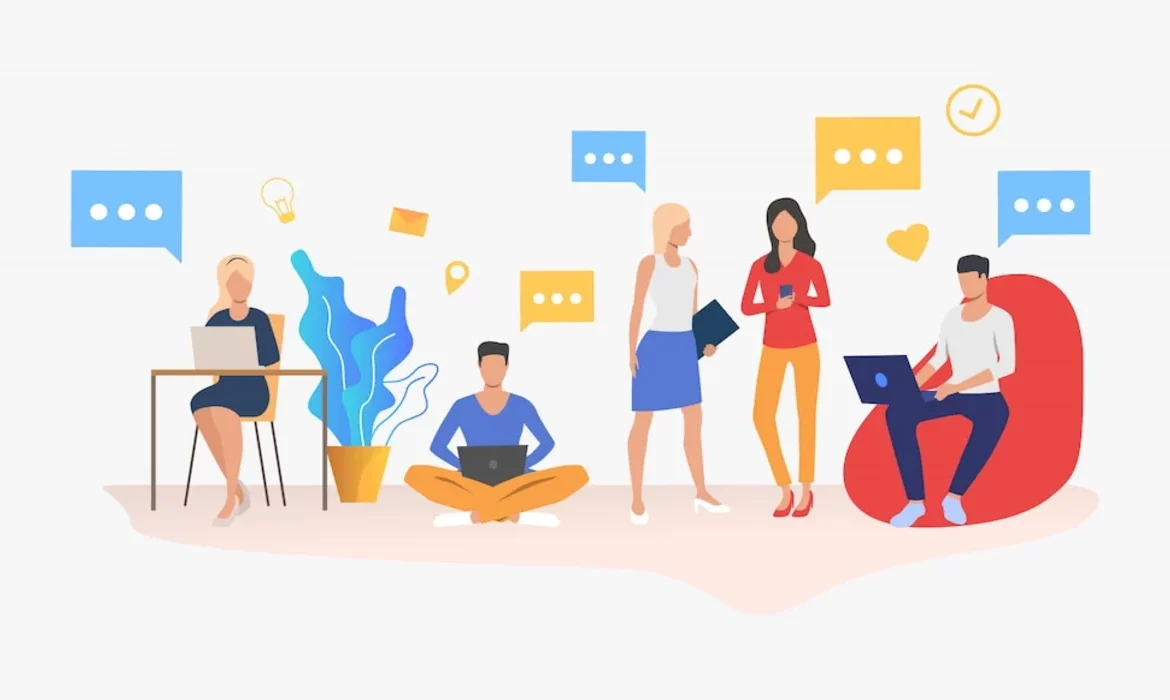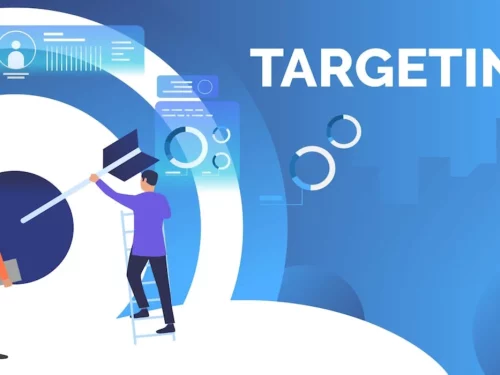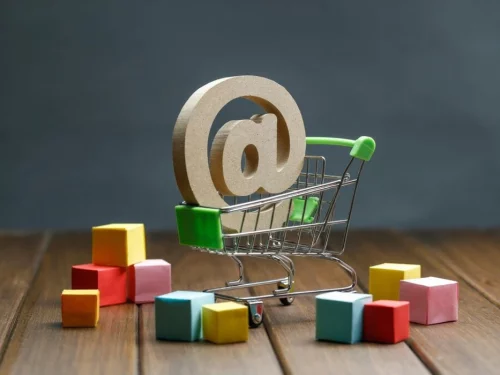
Think back to your last online shopping experience. You visited a website, looked around, and added a product to your cart—but left without buying.
Later, you’re scrolling through Facebook, and there’s an ad reminding you about the exact item you almost bought, maybe even offering you a special discount. So you click back, complete your purchase, and shortly after, you get an email suggesting other products based on your interests.
This smooth, personalized journey isn’t random—it’s strategic Personalization and Behavioral Targeting done right. But why does it matter for your business in 2025? Let’s break it down clearly.
What is Personalization & Behavioral Targeting in Digital Marketing?
Before we explore future trends, let’s establish clarity around two foundational terms that shape today’s marketing landscape—Personalization and Behavioral Targeting.
Personalization: Making Every Interaction Unique and Meaningful
Personalization in digital marketing refers to customizing the experience for individual users based on their specific interests, preferences, demographics, or past interactions. It’s essentially making your marketing communications feel tailored uniquely for each person, instead of sending out a generic message that’s the same for everyone.
Think of personalization like visiting your favorite coffee shop. The barista knows your usual order—maybe it’s a cappuccino, two sugars, and extra foam—and prepares it exactly how you like, greeting you by name.
In the digital world, this translates to your website recognizing returning visitors and showing them personalized product recommendations and offers based on what they previously browsed or bought. Or it can be your email campaign automatically sending customized offers to individual customers on their birthdays or anniversaries.
For instance, imagine Sarah visiting an online fashion store. She browses through summer dresses and adds one to her cart but doesn’t purchase immediately. Later that day, she receives a personalized email with a friendly reminder about the dress, perhaps even accompanied by a special discount code.
Here, personalization makes Sarah feel valued and understood, significantly increasing her likelihood of completing the purchase.
In short, Personalization is about creating an emotional connection with your customers by tailoring each interaction to their unique characteristics or past actions, making them feel valued, understood, and appreciated.
Behavioral Targeting: Showing the Right Message at the Perfect Moment
On the other hand, behavioral targeting specifically involves analyzing user behavior—the actions someone takes online (such as clicks, searches, purchases, or page visits)—to deliver relevant marketing messages or advertisements at the exact moment they’re most likely to engage.
Think of behavioral targeting as a salesperson observing your behavior in a physical store. If you’re browsing running shoes, the salesperson might proactively recommend related products, like athletic socks or fitness apparel, noticing your immediate interests.
This translates into digital platforms like Google or Facebook showing highly relevant ads based explicitly on a user’s recent behavior.
For example, suppose Rayan visits an electronics website and browses different camera models, spending considerable time comparing features, but leaves without purchasing. Later, while Rayan is on Instagram, he notices ads showcasing discounts on the very cameras he recently explored.
These ads weren’t random—they appeared because his previous actions indicated clear interest. This is behavioral targeting in action: responding precisely to recent behavior by delivering relevant messages, thus increasing the likelihood of a purchase.
To summarize, Behavioral Targeting is all about timing—identifying what a user is actively interested in right now and strategically placing relevant, behavior-driven messages exactly when they are most receptive.
Why Should You Focus on Personalization & Behavioral Targeting in 2025?
As we approach 2025, consumer expectations for digital experiences are higher than ever. Users demand personalized, relevant, and engaging interactions with brands. According to research:
- 91% of consumers say they’re more likely to buy from brands offering personalized experiences.
- Businesses leveraging advanced personalization report a 20-30% uplift in revenue and engagement compared to those using generalized marketing.
Moreover, as data privacy regulations tighten globally (GDPR, CCPA, etc.), marketers must shift toward transparent, consent-driven personalization methods. It’s not just beneficial—it’s essential.
Embracing advanced personalization and behavioral targeting strategies will position your business as a trustworthy, customer-centric brand while driving sustainable growth in increasingly competitive digital landscapes.
Simply put, if you aren’t prioritizing personalization in your digital strategy by 2025, your competition surely will.
Top 9 Current Trends in Personalization & Behavioral Targeting
Simply being present across multiple digital channels won’t be enough—your customers will expect seamless and highly personalized experiences that recognize them instantly and respond in real time across every interaction.
The future of personalization isn’t just about knowing your customers; it’s about accurately predicting their next move, and delivering the right message at precisely the right moment, regardless of the platform.
At EvenDigit, we’ve observed firsthand how brands that master advanced omnichannel personalization and behavioral targeting significantly outperform competitors, achieving deeper customer relationships and measurable business growth.
So, to ensure your brand doesn’t fall behind, here are the 9 powerful trends in Personalization & Behavioral Targeting you must embrace for 2025:
Trend #1: Intent-Based SEO & Semantic Personalization
Search Engine Optimization (SEO) has evolved significantly over the past few years, shifting dramatically from simple keyword targeting toward a deeper understanding of user intent. In 2025, this trend will only become more pronounced.
Today, customers no longer search using fragmented keywords—they use complete phrases and questions, expecting immediate, accurate answers. Google and other search engines rapidly adapt to this behavior by prioritizing websites that match the underlying user intent, not just keyword presence.
What is Intent-Based SEO Exactly?
Intent-based SEO is about deeply understanding why a user is searching—are they looking to purchase, comparing products, or just gathering information? It goes beyond basic keyword research and involves creating content specifically matched to what users genuinely want at that particular moment.
There are primarily four key types of user intent:
- Informational intent: The user wants answers or information (e.g., “how to improve website SEO”).
- Navigational intent: The user desires to reach a specific website or resource (e.g., “EvenDigit SEO services”).
- Transactional intent: The user intends to buy or take immediate action (e.g., “buy digital marketing course online”).
- Commercial Investigation: The user compares options before buying (e.g., “best SEO agency for e-commerce”).
Semantic Personalization: The Next Level
Alongside intent, another crucial factor emerging rapidly is Semantic Search, where search engines interpret the context, meaning, and relationships between words to deliver highly relevant, personalized results.
In practical terms, semantic personalization means your website must deliver content that genuinely answers user queries in natural, conversational language, not just in disconnected keywords.
This shift will force marketers to produce deeper, highly contextual, and meaningful content, fully aligning their digital marketing efforts with the actual queries and expectations of their target audience.
Actionable Steps Your Brand Can Take:
- Deep User Intent Research: Regularly analyze search query data to understand your audience’s intent behind every keyword.
- Semantic Content Optimization: Create content that answers the underlying questions of users clearly and contextually.
- Structured Data Implementation: Leverage Schema markup to enhance semantic understanding and improve visibility in search results.
- Continuous Intent Monitoring: Regularly monitor and refine your SEO approach based on changing customer search behaviors.
Trend #2: AI-Driven PPC & Predictive Advertising
Pay-per-click (PPC) advertising has always been about precision—targeting the right audience, with the right message, at precisely the right moment. But by 2025, PPC will reach new heights of accuracy and efficiency thanks to advanced Artificial Intelligence (AI) and predictive analytics.
AI-driven PPC goes beyond traditional advertising techniques, leveraging vast datasets and machine learning to predict customer behavior and intent with remarkable accuracy.
This means AI can anticipate not only who your best customers might be, but exactly when and where they’re most likely to click, engage, or buy.
What Exactly is AI-Driven PPC and Predictive Advertising?
AI-driven PPC combines sophisticated algorithms, machine learning, and real-time data analysis to automate and continuously refine advertising campaigns.
Predictive advertising specifically involves using historical data, user behavior patterns, and real-time signals to forecast future user actions and preferences.
For example, rather than manually setting bids for keywords or guessing what might attract users, AI-driven systems use machine learning to interpret vast amounts of historical data—such as past searches, clicks, purchases, demographics, device types, locations, and even weather conditions—to predict precisely when and where an ad will perform best.
This predictive accuracy allows brands to place ads strategically, enhancing relevance, reducing ad spend waste, and significantly increasing conversions and ROI.
How AI-Driven PPC & Predictive Advertising Works?
Imagine you’re running an online store selling home appliances. Traditional PPC might show your ad to anyone searching for “best kitchen appliances.” But with predictive advertising, the AI identifies users who’ve recently browsed similar products, watched relevant product videos, or searched related topics.
It then determines the best time to display your ads—perhaps immediately after they watch a YouTube cooking video or visit a recipe website.
Moreover, predictive AI continuously adapts your campaigns in real time. If the data suggests users are more likely to purchase kitchen appliances on weekends or evenings, your bids and ads automatically adjust to capitalize on those times.
You spend less, convert more, and achieve a significantly higher return on your advertising investment.
Key Benefits of AI-Driven PPC & Predictive Advertising:
- Improved Targeting Accuracy: Deliver ads precisely when and where customers are ready to engage.
- Higher ROI & Reduced Waste: AI reduces guesswork, allowing your ad spend to target users who are genuinely likely to convert.
- Enhanced Real-time Optimization: Campaigns continuously improve based on real-time data, rapidly responding to changes in consumer behavior.
- Advanced Audience Segmentation: Predictive AI identifies new audience segments based on subtle behavioral signals, allowing highly personalized ads at scale.
How to Prepare Your PPC Strategy for AI & Predictive Analytics:
- Invest in Data Quality: Start now by collecting and managing accurate historical and real-time data to train AI models effectively.
- Leverage AI Platforms: Utilize AI-powered tools and features provided by Google Ads (Performance Max, Smart Bidding), Microsoft Ads, and similar platforms.
- Enable Advanced Tracking: Implement advanced conversion tracking and attribution models to help AI understand which ads and audiences drive the best results.
- Stay Agile & Data-Driven: Regularly monitor predictive insights and adapt your PPC campaigns based on AI recommendations, continuously refining your targeting and strategy.
Trend #3: Hyper-Personalized Email Automation & Behavioral Triggers
In 2025, simply addressing your customers by name won’t cut it. Users now expect emails that instantly respond to their online behavior—such as recent browsing history or abandoned carts—with relevant content and offers.
Hyper-personalized email automation uses real-time behavioral triggers—like browsing activity or cart abandonment—to automatically send customized emails.
For instance, if someone views running shoes but leaves your site, they might immediately receive an email featuring those exact shoes with an enticing discount, encouraging a quick purchase.
Why does this matter? Hyper-personalized emails typically deliver up to 6× higher conversions compared to generic emails. In a crowded digital inbox, tailoring your message directly to user behavior helps your brand stand out clearly, increases customer loyalty, and boosts ROI.
How can your business leverage this?
- Track user behaviors on your website using analytics tools (Google Analytics, CRM platforms).
- Set up automated emails triggered by specific customer actions (cart abandonment, product browsing).
- Regularly analyze performance and refine messaging to optimize conversions.
Trend #4: Advanced Social Media Retargeting & Behavioral Ads
In 2025, generic social ads simply won’t cut it. Advanced behavioral retargeting will be crucial to maximize your social media ad performance.
Behavioral retargeting on social platforms involves strategically showing personalized ads to users based directly on their recent actions—what they’ve browsed, clicked, or previously purchased.
For instance, if someone views camping gear on your website, platforms like Facebook or Instagram can immediately serve tailored ads showcasing similar products, offers, or complementary accessories, precisely aligned with their demonstrated interests.
Why prioritize this?
Because targeted behavioral ads consistently achieve 3-5× higher click-through rates (CTR) and significantly higher ROAS compared to traditional ads. By responding instantly to user signals, your campaigns become far more relevant, engaging, and effective.
Highly Practical & Expert Recommended Steps:
1. Advanced Pixel Setup
Use advanced pixels (Facebook Pixel, LinkedIn Insights Tag) to track detailed user actions, like specific product views or video interactions.
2. Behavioral Audience Segments
Create highly targeted retargeting segments based on exact browsing habits or product interests (e.g., “visitors who viewed running shoes twice this week”).
3. Dynamic Ads (Facebook/Google)
Activate dynamic ad campaigns that automatically personalize creatives according to products users recently browsed or added to carts.
4. Time Your Ads Strategically
Schedule retargeting ads to appear precisely during peak engagement hours based on audience analytics, maximizing clicks and conversions.
5. Continuous Behavioral Optimization
Frequently analyze campaign performance metrics (click-through rates, engagement) to fine-tune your audience segments and ad creatives.
Trend #5: Real-Time Website Personalization & CRO
Real-time personalization dynamically adjusts website content instantly, based on each visitor’s current behavior or actions, creating highly relevant and personalized experiences that boost conversion rates.
When a user interacts with your website—like exploring certain products, adding products to the cart, or indicating an intent to exit—the website instantly displays personalized messages or offers relevant to those actions.
Real-time personalization significantly improves user experiences, immediately capturing attention and enhancing conversion potential. Personalized experiences typically drive up to 20–30% higher conversions compared to generic websites.
Actionable Steps:
- Use real-time analytics tools (Google Optimize, Hotjar) to identify key user actions on your website.
- Set up dynamic content (exit-intent pop-ups, personalized recommendations) triggered by real-time behavior.
- Continuously test content variations (headlines, offers, CTAs) for optimal engagement.
Trend #6: Data-Driven Personalized Content Marketing
Data-driven content personalization means producing tailored content specifically aligned with your audience’s demonstrated behaviors, interests, and purchasing journey stages.
Instead of generic blog posts or videos, create precisely targeted content—such as personalized email newsletters, video tutorials, or landing pages—based on behavioral insights collected through analytics tools.
Personalized content generates significantly higher engagement—typically 2-3× more clicks and conversions—by directly addressing the exact interests or pain points your users demonstrate.
Actionable Steps:
- Clearly map your customer journey and create content specific to each funnel stage.
- Analyze audience engagement data (Google Analytics, Adobe Analytics) to determine content preferences.
- Leverage dynamic content platforms (HubSpot, Adobe Experience Manager) to deliver personalized content at scale.
Trend #7: Privacy-First Personalization with First-Party Data
Privacy-first personalization involves ethically using data your brand collects directly (first-party data) from users, rather than relying on third-party cookies or external sources.
Brands transparently gather customer data through consent-based interactions, using it ethically to personalize marketing (e.g., personalized email offers and tailored ads based on direct customer-provided preferences).
With tighter privacy regulations (GDPR, CCPA) and cookie limitations, collecting and ethically using first-party data is not optional—it’s necessary to remain compliant and trusted by consumers.
Actionable Steps:
- Clearly communicate data collection intentions to your customers, fostering transparency and trust.
- Adopt Customer Data Platforms (CDP) like Segment or Tealium for ethical first-party data integration.
- Set up consent-driven personalization practices, ensuring full compliance and high user trust.
Trend #8: Funnel-Driven Integrated Personalization
Funnel-driven personalization means strategically tailoring your marketing messages to match exactly where customers are in their buying journey—whether they’re just discovering your brand, comparing options, or ready to buy.
Instead of generalized marketing, you create customized campaigns specifically tailored to where your users are in the funnel—educational content at awareness, product comparisons at consideration, and timely offers at decision stages.
Brands using funnel-based personalization achieve higher conversions and stronger customer loyalty due to precisely timed, relevant communications throughout the buying journey.
Actionable Steps:
- Clearly map your customer’s buying journey stages and align your marketing efforts accordingly.
- Segment your audience clearly based on funnel stages and tailor content or offers specifically for each segment.
- Continuously analyze and refine your funnel strategy based on real-world performance data.
Trend #9: AI & Predictive Analytics for Audience Behavior Forecasting
Predictive analytics involves using AI and historical user data to accurately forecast customer behaviors and actions, enabling proactive rather than reactive marketing strategies.
AI analyzes past customer behaviors, purchasing patterns, and browsing habits to predict exactly when a customer will be ready to engage again. This lets you trigger personalized messages or ads at precisely the right moment.
Brands using predictive analytics see significantly higher engagement and conversions because they proactively meet customer needs, rather than reacting late or missing opportunities.
Actionable Steps:
- Implement predictive analytics tools (Google Analytics 4 predictive insights, Adobe Analytics) to forecast customer actions.
- Set up AI-driven automated triggers based on predicted customer behaviors, like timely reminders, discounts, or recommendations.
- Regularly test and refine your predictive models based on ongoing campaign performance.
We Achieved Exceptional Results by Embracing These Trends
At EvenDigit, numbers speak louder than words. We’ve consistently delivered exceptional client results by strategically implementing advanced personalization and behavioral targeting.
We’ve successfully harnessed intent-driven SEO, resulting in organic traffic growth that exceeded 900%. Our adoption of AI-driven PPC campaigns has dramatically improved advertising efficiency, achieving returns nearly 30 times the ad spend.
Through hyper-personalized email automation, we’ve helped businesses boost revenue by over 130%, simply by sending tailored, timely messages aligned directly with user behaviors. Similarly, advanced social media retargeting and real-time website personalization have transformed engagement levels and conversion rates, consistently outperforming traditional campaigns.
These aren’t just numbers—they represent tangible, record-breaking results driven by our commitment to embracing personalization trends early. By partnering with EvenDigit, your brand too, can achieve results that set new industry benchmarks.
How EvenDigit Helps You Prepare for Personalization in 2025
To help your business succeed in the fast-changing digital world of 2025, we focus heavily on advanced personalization and behavioral targeting strategies that directly impact your bottom line.
We combine powerful data insights and AI-driven tools to craft marketing strategies uniquely tailored to your customers’ exact interests and behaviors. Instead of generalized messages, your audience receives timely and personalized interactions across SEO, PPC, email, and social media, dramatically boosting engagement and conversions.
We proactively build personalization strategies using your own ethically-collected first-party data, ensuring you remain fully compliant with privacy regulations. Our team consistently monitors and optimizes your digital presence in real time—making adjustments that instantly improve your results.
With EvenDigit, personalization isn’t just a trend—it’s your key to measurable success. Ready to unlock your brand’s true potential in 2025?
Let’s connect and personalize your growth path today!
EvenDigit
EvenDigit is an award-winning Digital Marketing agency, a brand owned by Softude (formerly Systematix Infotech) – A CMMI Level 5 Company. Softude creates leading-edge digital transformation solutions to help domain-leading businesses and innovative startups deliver to excel.
We are a team of 70+ enthusiastic millennials who are experienced, result-driven, and hard-wired digital marketers, and that collectively makes us EvenDigit. Read More





